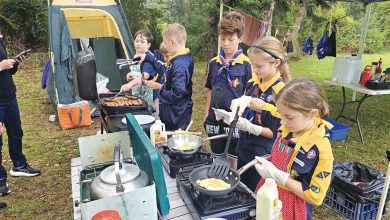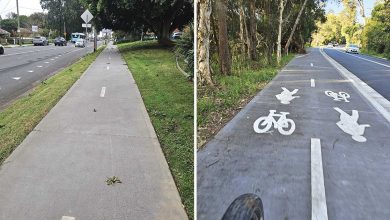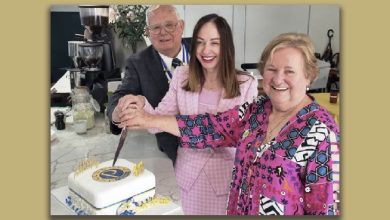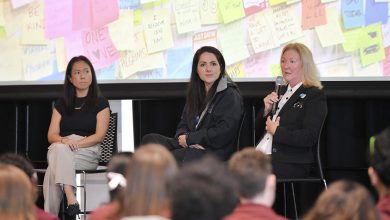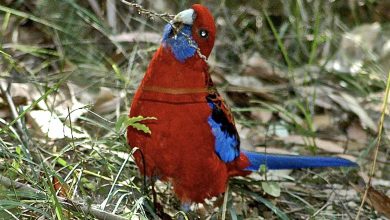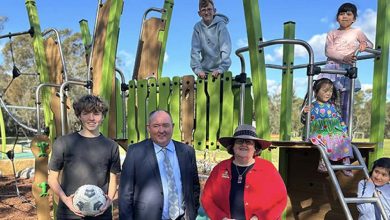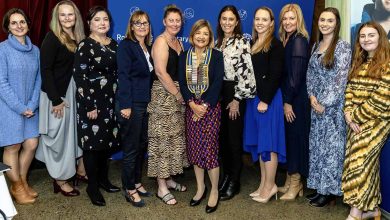Maisie Allan’s story of growing up (Part 8)
A clothes-props man came round occasionally, the prop was used to hoist the clothesline and was made from a sapling with a forked top. Clotheslines, in those days, were a pole at each end with bars across to carry two lengths of wire stretched between them. After the clothes were hung, the prop hoisted them high to catch the breeze. There was the baker with his basket, he would load up the cart and walk from house to house and the old horse would amble along, knowing where to stop next.
The Milko would come through the night, filling the jugs and billies left out overnight. Milk bottles only appeared around the 50s, to be later replaced by wax cartons.
Our favourite was the Grocer, Mr McGuchin. He worked for Yuiles Grocery and once a week rode his cycle around the customers for orders. He’d come in and sit on a chair with his order list and recite, tea, sugar, cocoa, flour, baking powder, rice etc and Mum would tell him what she needed. When the order was delivered the next day, there was always a few boiled lollies for we kids, a square of newspaper was rolled into a funnel shape and the lollies tucked into it. There was always a scramble to see whose turn it was to have the humbug – a black striped peppermint flavoured boiled lolly.
An Easter treat was the Fisho who came on Good Friday and the Baker calling “Hot Cross Buns, one a penny, two a penny, Hot Cross Buns”. The Postman came twice a day and every letter dropped into the box was followed by a whistle. He was always on foot and had a cheery work for everyone.
Mum didn’t know a lot about sewing but was able to always keep us neat and tidy and she used to remake handed down clothes. We never had overlarge or too long clothes, she always made them fit. Flour was purchased in 75lb bags and the bags were made of unbleached calico. When empty the bags were washed and left soaking in kerosene for days to soften the paint used in the printing on the bag, then boiled down to lighten the remaining colour. Mum made them into undies and slips and they were often getting quite thin before the colour faded right off. The flour millers name and emblem were printed on the bags, one had a huge Union Jack, and the other, Rosa Brand (the trade name of McIlwraths, a large grocery firm) displayed a large red rose and were the favourites of the girls, we had fun at school showing each other what writing or emblem was on the bloomers we were wearing that day. Bloomers were large loose pants, with elastic at the waist and in the hem of the knee-length legs and were handy to keep our hankies in as well as our rubber erasers to the horrible little boys would not take them.
The area where we grew up was full of clay and we didn’t have to dig too dig to find clay. We wet and rolled the clay until if softened to a pliable mix, then we moulded it into dolls. We used sticks for arms and legs and then made clothes to fit them while they were left to dry on the top of Dad’s shed in the sun. I remember one Christmas, all I wanted was real doll. All Santa could afford was a very small story book. I guess I was a lucky little girl as many children would have missed out as there was very little money around at that time.
Mum made rag dolls and painted or embroidered faces on them, gollywogs were made out of black woollen socks and stockings. Nobody expected more as most of the children had the same toys handmade by their parents. Dads made toys out of wooden tea chests and butter boxes and, as they got older, the boys made billycarts out of fruit boxes and old wheels.
I still have the box Dad made called a “nappy box”. Dad had screwed hinges to the lid of a butter box and the nappies were kept in it. It was a good height for Mum to sit and feed her babies, often pushing a toy with her foot to amuse her toddler happily playing on the floor.

